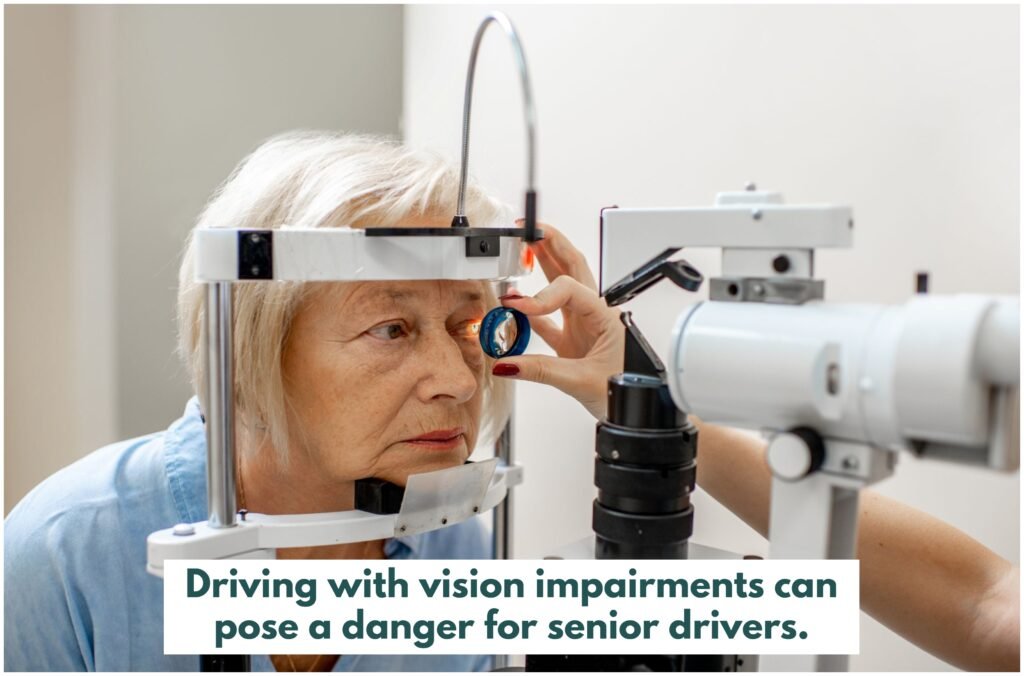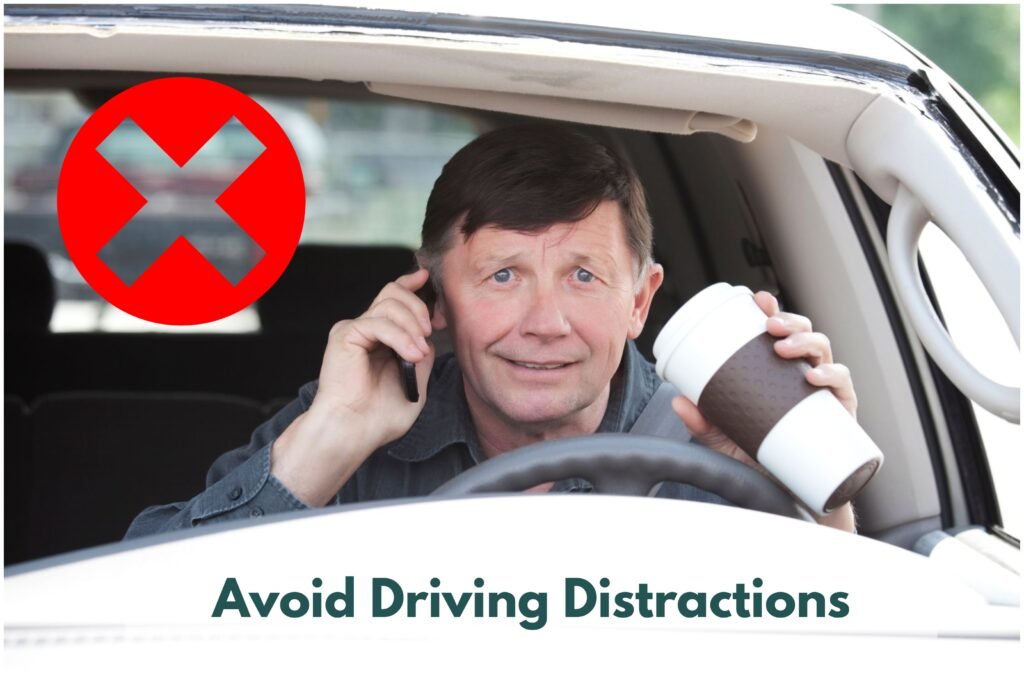The Ultimate Guide to Senior Driving Safety:Key Safe Driving Factors

Last Updated on September 4, 2025 by Rose
Getting older doesn’t mean we have to give up driving. For many seniors, driving represents more than just getting from one place to another — it’s a symbol of freedom, independence, and the ability to maintain an active lifestyle. Whether it’s running errands, visiting family, or simply enjoying a leisurely drive, having the ability to drive helps seniors stay connected to the world around them.
However, as we age, natural changes in our bodies and minds can affect how we drive. Vision and hearing may not be as sharp as they once were, reaction times may slow down, and physical flexibility might decrease, all of which can impact driving ability.
These changes don’t necessarily mean that driving is no longer possible, but they do highlight the importance of being more mindful about safety on the road. As we continue to drive, it’s crucial to acknowledge these changes and make adjustments that help us stay safe while driving.
This guide aims to provide seniors, their families, and caregivers with the essential information and tips to ensure that seniors can continue to drive safely. And we’ll also cover the alternatives for those who choose not to drive.
By making informed decisions about their health, the condition of their vehicle, and driving habits, seniors can reduce the risk of accidents and maintain the independence driving offers for years to come. Whether you’re a senior driver or someone who helps care for a senior, understanding these key factors is vital to keeping everyone safe on the road.
Why Senior Driving Safety Matters
The National Highway Traffic Safety Administration (NHTSA) reports that drivers aged 65 and older are involved in more accidents per mile traveled compared to other age groups, making them more vulnerable to collisions.
These statistics highlight the need for senior drivers to be proactive about their safety. As we grow older, factors like slower reflexes or difficulty seeing at night can make it harder to react in time to sudden changes on the road, increasing the chances of accidents.
Because older adults are more likely to face challenges while driving, it’s even more critical for them to be equipped with the right tools, resources, and knowledge to drive safely. This guide explores crucial factors to help seniors navigate the roads safely.
Prefer to listen rather than read?

Regular Physical and Medical Checkups
Taking care of our health is key to driving safely, especially as we get older. Regular check-ups are essential for identifying any health conditions that might affect our ability to drive. Regular visits to your doctor can help identify and manage these issues before they affect your driving.
Health issues like poor vision, hearing loss, slower reflexes, or even cognitive decline can all interfere with driving performance, making it harder to react quickly, see clearly, or focus on the road. For seniors, staying on top of these issues is not just about managing health; it’s about ensuring safety for both the driver and everyone else on the road.
For example, changes in vision are common as we age. Conditions such as cataracts, glaucoma, and macular degeneration can make it difficult to see well while driving, especially at night or in low-light conditions. Similarly, hearing loss can prevent you from hearing important sounds—like sirens or car horns—that could alert you to potential dangers.
Cognitive decline is another concern, as it can affect memory, decision-making, and reaction times, all of which are critical for safe driving. Even mobility issues, like arthritis or Parkinson’s disease, can make it harder to turn the steering wheel, press the pedals, or maintain control over the vehicle.

Recommendations for Seniors:
- Vision and Hearing Tests
- Make it a habit to schedule eye and hearing exams annually. These tests help detect conditions like cataracts, glaucoma, and age-related hearing loss, which could impair your ability to drive safely.
- Cognitive Assessments
- If you notice any changes in your memory or concentration, talk to your doctor. They can offer strategies or referrals to specialists to help manage cognitive decline.
- Physical Evaluations
- If you have arthritis, back pain, or other mobility issues, it’s a good idea to consult with a physical therapist. They can suggest exercises to improve your strength, flexibility, and range of motion, all of which are important for safe driving.
Being proactive about your health can help catch potential problems before they become serious driving hazards. Plus, these health assessments can help ensure that you’re fit and ready to drive, whether it’s a short trip to the grocery store or a long road trip.

Be Aware of Medication Side Effects
Many medications, including those for common age-related ailments, can have side effects that impair driving. It’s crucial to be aware of how your medications may affect your reaction times, vision, and overall alertness.
Recommendations:
- Consult Your Doctor
- Review all medications, including over-the-counter drugs and supplements, with your healthcare provider to identify any that may impair driving.
- Read Labels Carefully
- Pay attention to warning labels regarding drowsiness or other cognitive effects.
- Adjust Timing
- If possible, schedule medication doses at times that do not coincide with driving.
Understanding and managing medication side effects can reduce the risk of accidents and promote safer driving practices.

Be honest with your doctor about your driving and concerns. They can assess if medications affect your driving and suggest adjustments. Taking responsibility for your medications and staying in communication with your doctor is key for senior driving safety, ensuring you drive confidently and cautiously.
Drive with Caution in Challenging Conditions
Driving can be enjoyable for seniors, but it can also be risky if the right safety measures are not taken. Therefore, reducing the likelihood of collisions or driving mistakes is crucial. Setting aside additional time for travel is one efficient method to accomplish this. This entails giving yourself enough time to get there without feeling hurried or under pressure.
- Avoid Speeding
- Avoiding speeding while driving is required, especially in risky situations like inclement weather or locations with a lot of pedestrian traffic. It is crucial to be mindful of driving circumstances that demand additional prudence, like congested roads, particularly regarding senior driving safety.
- Exercise Extra Caution
- As we grow older, our capacity to cope with specific driving scenarios and our response times may deteriorate, making it important to exercise extra caution while driving. Older drivers can find adverse weather, heavy traffic, and unfamiliar routes particularly daunting, necessitating strategic planning and modifications to their driving habits.

- Avoid Distractions
- Another crucial factor to consider while driving is avoiding distractions. Distractions can vary, including phone use, eating, or conversing with passengers. It is essential to stay focused on the road to maintain safety for both the driver and others on the road.
Finally, seniors may ensure a safe and enjoyable driving experience by identifying potential hazards and taking the required precautions. This entails being aware of and following traffic regulations, utilizing turn signals, and keeping a safe distance from other vehicles. Seniors can benefit from the independence and freedom that driving provides while also assuring their own and other drivers’ safety by doing this.
Use Assistive Devices to Enhance Comfort and Visibility While Driving.
Modern vehicles offer various assistive technologies that can enhance safety and comfort for senior drivers. Utilizing these features can address age-related challenges.

Adaptive Mirrors
Using adaptable mirrors is a practical method to increase visibility and comfort. Wider fields of vision from these mirrors are intended to lessen blind spots and improve the sight of oncoming cars. Various adaptive mirror types can be fitted on the side mirrors or rearview mirrors of the car, including wide-angle mirrors, blind spot mirrors, and panoramic mirrors. Driving becomes safer and more comfortable for elderly drivers because of these mirrors’ significant improvements in the visibility of other cars and pedestrians.
Seat Cushions
Using seat cushions made exclusively for older folks is another way to increase comfort while driving. The materials used to make these cushions offer support and relieve strain on delicate areas including the back, hips, and tailbone. They can aid in easing the discomfort and agony brought on by prolonged sitting, making driving more enjoyable and less exhausting. Additionally, some seat cushions have extra characteristics like memory foam for comfort, heating or cooling components, or massage capabilities.
Anti-Glare Visors and Other Temporary Modifications
Additional helpful gadgets and modifications are available for seniors who have difficulty driving. These include anti-glare visors, steering wheel covers, pedal extenders, and hand controls. These technologies can be installed in the car to improve comfort and safety for older drivers.
Consult a professional like an occupational therapist or a driver rehabilitation specialist for assistive device recommendations to address individual needs and limitations for safer and more comfortable driving.
Plan Ahead: Avoid Unfamiliar or Challenging Roads
Planning your travel routes can significantly reduce stress and enhance safety. Familiarity with the route and awareness of potential challenges can lead to a more relaxed driving experience.
Recommendations:
- Use GPS Navigation
- Employ GPS systems with real-time traffic updates to avoid delays and detours.
- Avoid Rush Hours
- Schedule trips during times when traffic is lighter.
- Identify Rest Stops
- For longer journeys, plan for breaks to rest and refresh.
Effective route planning can lead to safer and more enjoyable travel experiences.

Acknowledge and Accept Any Limitations or Changes in Your Driving Abilities
It’s important to recognize and accept any limitations or changes in our driving ability that may take place as we age. Being truthful with oneself about these changes is essential for senior driving safety. Physical and cognitive changes are normal components of the aging process. Recognizing physical limitations like decreasing muscle strength or flexibility or cognitive changes like a slowdown in reaction time or attention span might be examples of this.
You can take proactive measures to modify your driving habits or look for services that can help you preserve your freedom while staying safe on the road by recognising and accepting these changes. Changing your driving schedule or routes is one way to prevent driving when you might be feeling tired or when the road conditions might be difficult. Driving in the sunshine or avoiding rush hour traffic, for instance, can help lower stress and potential risks on the road.
In the end, a crucial component of maintaining your safety and freedom as a senior driver is being ready to change your driving behaviours. You can prioritize senior driving safety and maintain your independence while driving safely by accepting any limitations or changes in your driving abilities, being proactive about changing your driving habits or looking into alternate forms of transportation.
Never forget that you can always improve your driving abilities and make necessary changes to guarantee that you continue to do so safely as you become older.
Knowing When It’s Time to Hand Over the Keys — and What to Do Next
Driving is more than just a way to get from A to B – it’s independence, freedom, and for many, a lifelong habit. As we age, however, it’s important to take a step back and assess whether we’re still driving safely.
So far, we’ve talked about ways to stay confident behind the wheel – from keeping up with eye exams to adjusting routes to avoid stressful intersections or night driving. These tips can help extend your safe driving years.
But what happens when, despite best efforts, driving just isn’t safe anymore?
This next section is for those facing that difficult moment – or helping someone else through it.
???? When Safety Signals It’s Time to Stop Driving
Let’s be honest: few things are more emotionally loaded than giving up the car keys.
It’s not just about transportation. It’s about identity, freedom, and control. But just like we once had to prove we were ready to drive, there comes a time when we need to recognize when we’re better off letting someone else take the wheel.
Signs it might be time:
- You (or your loved one) feel nervous or overwhelmed while driving.
- There are more frequent close calls or minor scrapes.
- You struggle with confusing traffic signs or new intersections.
- Family or friends express concern — and not just once.
- You find yourself avoiding driving at night, in the rain, or in unfamiliar areas.
These aren’t judgments. They’re simply gentle red flags – reminders that the road is changing, and so are we.
It’s Not Giving Up — It’s Choosing Something Better
Stopping driving isn’t the end of your independence. It’s the beginning of a new chapter – one where you stay mobile, stay connected, and stay safe using tools that didn’t even exist a few years ago.
Enter: GoGoGrandparent.
GoGoGrandparent is a service built specifically for older adults who either don’t drive or have chosen to stop. It allows you to order rides, deliveries, and more – without needing a smartphone.
Yes, you read that right.
You just pick up the phone, dial a number, and GoGoGrandparent will connect you with:
- Uber or Lyft rides – customized for seniors
- Grocery and meal delivery
- Medication drop-offs
- Help with errands or appointments
It’s a smart, safe way to stay mobile without relying on family or friends every time.
And because it’s built for older adults, you get features like:
- Text or phone updates to family members
- 24/7 operator support
- Tailored preferences (like favorite drivers or avoiding highways)
For many, it’s not just a ride service. It’s a lifeline to independence.
Choosing Safety AND Freedom
Choosing to stop driving doesn’t mean giving up – it means being wise enough to adapt.
Remember, you’re not alone in this. According to AAA, most people outlive their ability to drive safely by 7 to 10 years. The key isn’t clinging to the car keys – it’s finding alternatives that still let you live fully.
GoGoGrandparent is one of those alternatives. And a great one.
If you or someone you care about is wondering whether it’s time to stop driving, take a moment. Reflect. Talk it through. And know that services like GoGo exist to support that transition with grace and dignity.
In Summary
Driving safely as we age is a personal decision — one best made with honest reflection and loving support. When the time comes to stop, it’s not a defeat. It’s a pivot. A smart one.
And thanks to services like GoGoGrandparent, it’s now easier than ever to keep your freedom, your social life, your independence – all without being behind the wheel.
???? Learn more about GoGoGrandparent
And So… Drive On or Step Back – Your Independence Remains
Getting older doesn’t mean giving up – it means getting smarter about how we move through the world.
If you’re still driving, that’s great. Stay sharp. Get regular health checks. Keep up with your car maintenance. Use every tool and tip available to stay safe and confident behind the wheel.
But if you’re at the point where driving no longer feels safe – or practical – know this: you’re not alone, and you’re not stuck.
Choosing to step away from the driver’s seat isn’t giving up. It’s stepping into a new kind of freedom.
Services like GoGoGrandparent, local transport programs, and a supportive community can help you stay mobile, independent, and connected to everything that matters.
Whatever path you choose, the goal is the same:
To keep living life on your terms.
Whether it’s in the driver’s seat or with a reliable ride-share one phone call away.
FAQ’s
Q: What’s the best way to assess if I’m still safe to drive?
A: Start with regular vision, hearing, and reflex checks. Be honest about how you feel while driving. If you’re anxious, confused, or tired during trips, it’s worth reviewing your routine or talking to your doctor.
Q: How do I talk to a loved one who may need to stop driving?
A: Gently. Start with concern, not criticism. Share specific examples and offer alternatives like GoGoGrandparent so the conversation isn’t just about what they’re losing – but what they’ll still have.
Q: I’ve stopped driving. What now?
A: Stay connected! Look into senior ride services, volunteer driver programs, and delivery apps. Ask your local council or senior center for transport options. Independence doesn’t end with a license.
Q: Are ride services like GoGoGrandparent safe?
A: Yes – GoGoGrandparent is designed for older adults and works with trusted providers like Uber and Lyft. It offers added features like caregiver alerts and 24/7 operator support. No smartphone needed.
Q: I’m still driving but want to plan ahead. Any tips?
A: Absolutely. Start researching alternatives now. Build a list of services, family contacts, and community transport options. Think of it as a backup plan – one you may never need, but you’ll be glad to have.
Disclaimer
The content provided on MySeniorsWorld is for informational purposes only and is not intended as either financial or medical advice. Always consult a qualified professional before making any investment or health-related decisions.
Posts may contain affiliate links, meaning we earn a commission – at no additional cost to you, if you click through and make a purchase. Your support helps us continue providing valuable content.






Responses